Ancient Rome Men’s Hairstyles: Timeless Trends
This exploration uncovers the rich tapestry of Ancient Roman hair trends, offering a window into the lives of men within the grandeur of the Roman Empire. These styles were not solely about appearances; they narrated stories of status, society, and spirituality.
Exploring the historical narrative of Ancient Rome, we uncover the men’s hairstyles that have resonated through time, crafted by the skilled hands of Roman barbers. These esteemed techniques have left a lasting impression on the world of grooming. The quintessential hairstyles of Roman men were not merely about appearance—they were a fundamental aspect of a man’s identity, as integral as his toga.
The Historical Significance of Ancient Roman Hair Trends
During Roman times, the hairstyles of emperors were well-documented and often set trends for the rest of society. A prime example is Augustus, whose portraits consistently feature his trademark hairstyle with distinct, forked locks on his forehead.
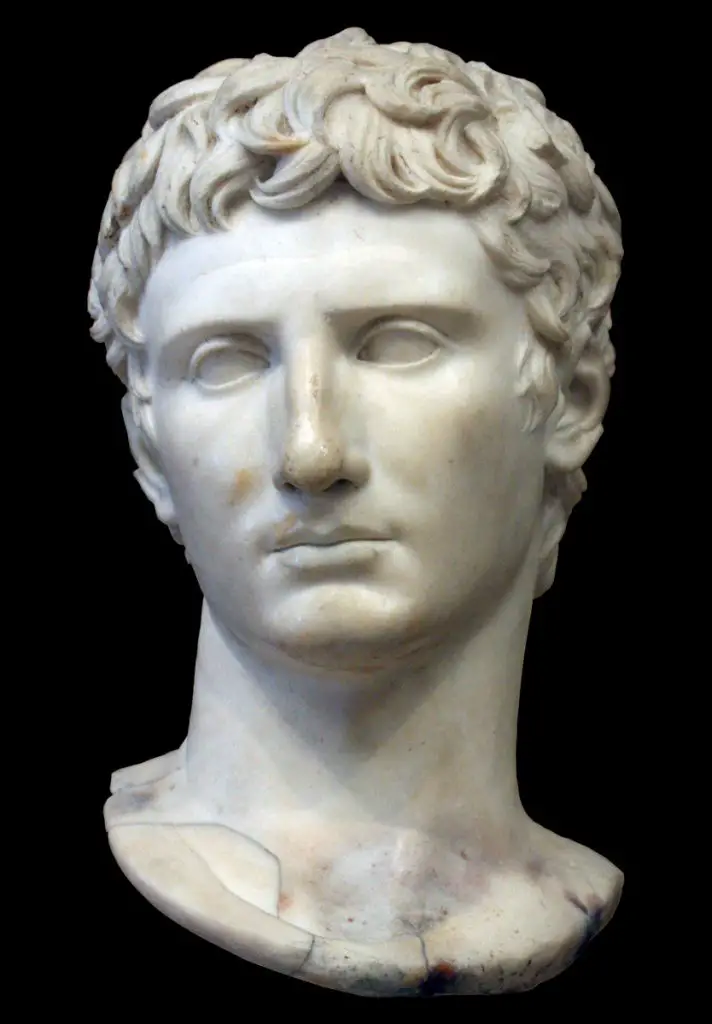
Emperors were generally regarded as fashion leaders, as illustrated by Emperor Nero (54–68 AD), who embraced elaborate hairstyles with curls and even sported sideburns, sparking a wider trend among men to curl their hair. In the subsequent Flavian period, it became fashionable for men to have their hair cut short at the crown, typically without much styling or volume. Following this trend, during the Trajanic era, a popular style emerged featuring straight hair cut with bangs across the forehead, further demonstrating how imperial fashions influenced broader hairstyle trends in Rome.
Delving into the depths of history, we uncover the powerful influence of Ancient Roman hair trends. Gone are the days when hairstyles were mere expressions of personal taste; in ancient Rome, every curl and twist was laced with meaning. For the stylish citizens of Rome, hair was a canvas, reflecting not only personal wealth but also echoing the societal norms of the Empire.
Symbols of Status: Curled and Coiffed for the Elite
The city’s cobbled streets were a showcase for the symbols of status among the patricians. It was a common sight to see elite hairstyles in ancient Rome, with hair carefully curled and coiffed to denote nobility and wealth. The laborious efforts of maintaining such detailed arrangements indicated one had both the time and resources, thus segregating the aristocracy from the plebeians, whose simpler styles mirrored their more modest means.
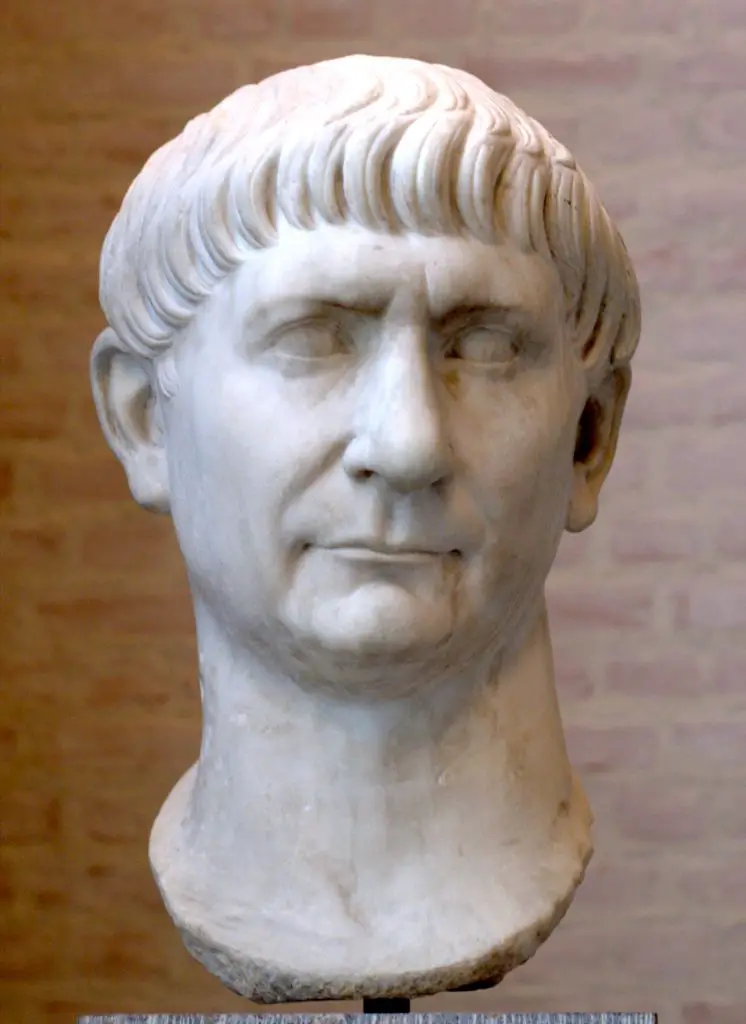
Religious and Political Ties: Hairstyles with Deeper Meanings
Yet, it wasn’t solely vanity that directed these styles. Hairstyles bore religious and political ties, serving as a tactile reflection of devotion and allegiance. The deities they worshipped, the leaders they followed, and the events they honoured, all tied into the way they styled their hair. As we examine the historical significance of hairstyles, we glean insight into the fabric that wove together the individual strands of ancient Roman society.
Whether one’s hair was crowned with laurel in homage to Caesar or styled in the divine fashion of Venus, every hairpin had a purpose, every plait a story.
Ancient Roman Barber Techniques: Crafting Classic Styles
As historians and enthusiasts of cultural fashion, we’re endlessly fascinated by the grooming practices in ancient Rome. The craftsmanship of Roman barbers was not just a service; it was an art that played a pivotal role in society. Imagine a bustling Roman forum, where aside from the din of daily commerce, you’d hear the snip of shears from the tonsor’s shop – the ancient barber at work.
Latin literary sources reveal that these early barbers, known as “tonsors,” were organized into local guilds during the Republic era. These guilds functioned similarly to other craftsman associations, providing mutual aid and protecting the interests of their profession against competition from slaves. While these guilds had their own internal rules and enjoyed certain tax benefits, the specifics of the apprenticeship system among the tonsors remain unclear, although apprentices were referred to as “circitores.”
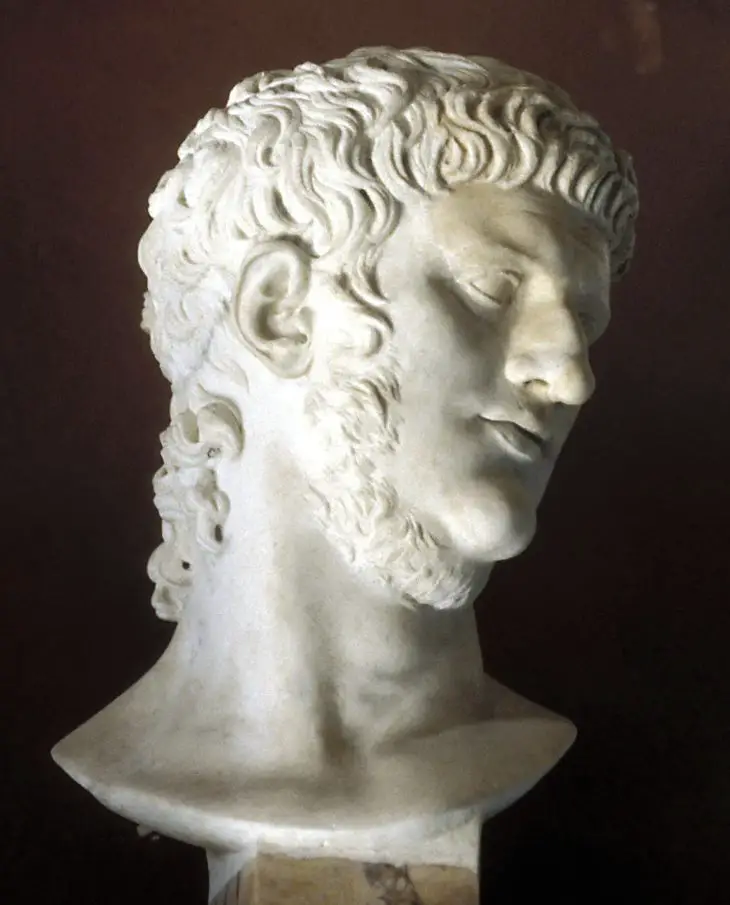
Tonsors were an integral part of daily Roman life, reflecting the society’s emphasis on body care, beauty, and elaborate hairstyles. Like their predecessors in Ancient Egypt, barbers often roamed the streets and taverns in search of clients. While they sometimes offered their services in public spaces, there is evidence of dedicated barber shops, known as “tonstrinae,” where they worked more formally. Their services were comprehensive, including hair cutting, beard shaving, and grooming tasks such as manicures, pedicures, and depilation, often requiring long hours to meet the demands of Roman citizens.
Barbers could achieve public acclaim, wealth, and popularity through their craft. For instance, Thalamus was known as Nero’s barber, and Pantagathus is remembered for his exceptional skills. There were, however, instances of customer dissatisfaction due to poor shaves or injuries, exacerbated by the absence of modern shaving aids such as creams or foams.
The tools of the tonsor were quite sophisticated, featuring blades or knives typically made of bronze. These evolved into a scissor-like tool called “forfex,” which consisted of two blades joined by a curved, horseshoe-shaped connector, the precursor to modern scissors. Tonsors also used combs (pectors), polished bronze mirrors, iron curlers (calamisters), tweezers (volsellas), ointments, and perfumes.
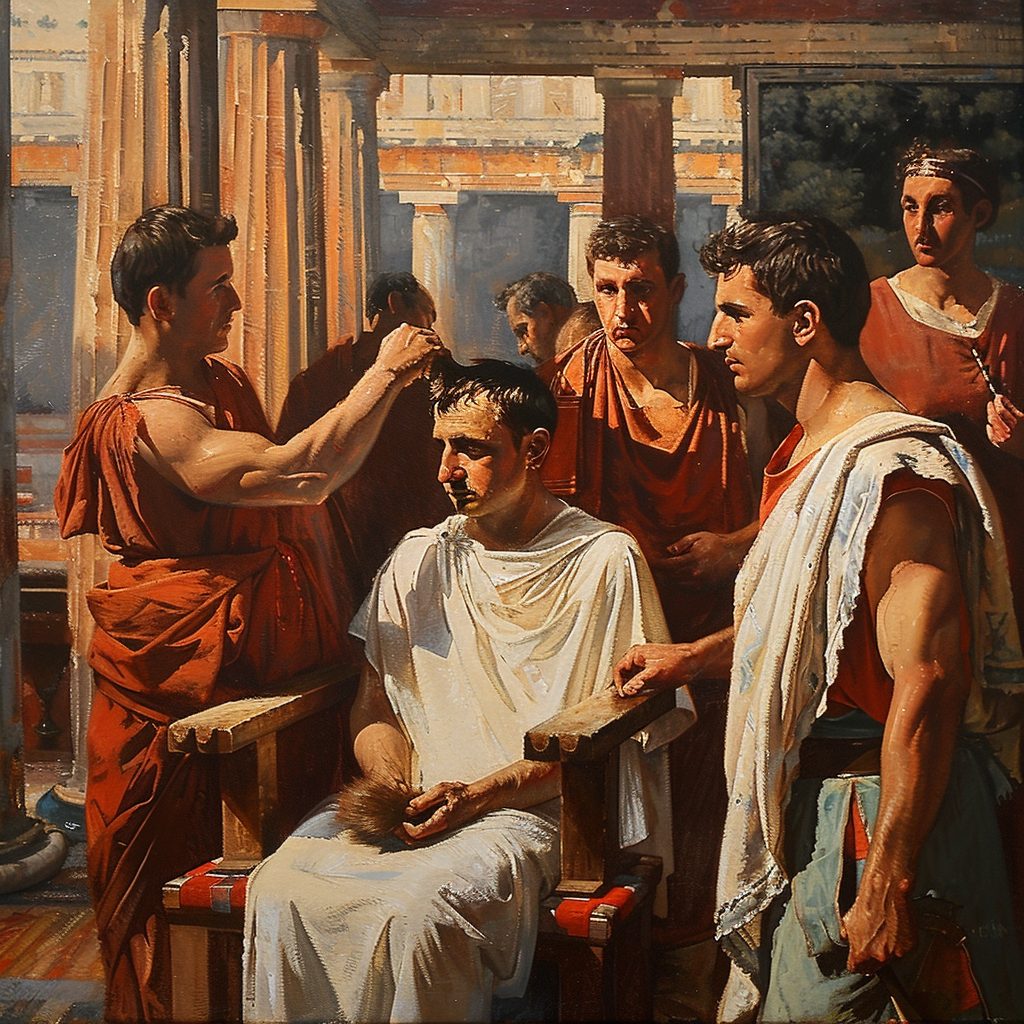
The Role of Tonsors in Roman Society
In the fabric of Ancient Roman society, where the barber, or “tonsor,” held a razor close to the throats of the elite, trust was paramount. The role of the tonsor extended beyond mere grooming; these artisans wielded sharp blades capable of both sculpting beauty and, potentially, executing harm. The intimacy of their work meant that emperors and senators alike had to trust their barbers implicitly.
This trust was cultivated through rigorous training and adherence to a strict code of conduct within the barber guilds. Despite these precautions, the inherent risk remained—a slip of the hand or a betrayal of trust could prove lethal. Historical anecdotes suggest that some Roman rulers chose their personal tonsors not only for their skill but also for their loyalty and discretion, understanding the strategic importance of keeping such close companions in confidence.
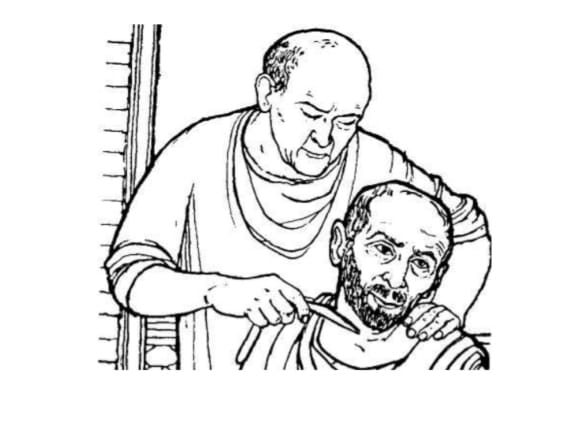
Adding to the narrative of Roman barbers is the story of a notorious incident where a barber’s blade became an instrument of conspiracy. In a tale shrouded in legend, a barber was once implicated in a plot to assassinate a high-ranking official, using his razor as the weapon. This story, whether myth or fact, underscored the potential danger lurking within such close relationships.
These dynamics reveal the complex role tonsors played in Roman society, balancing the art of hairstyling with the weighty responsibility of wielding a potentially deadly instrument. Their trusted position allowed them to shape not only the hair but also the very lives of their clients, blending the boundaries between personal care and personal security. This unique blend of trust and risk highlights the profound cultural significance of grooming practices in ancient Rome, where a haircut could mean far more than a change in appearance—it could mean the difference between life and death.
For the Roman man, every visit to the barber was a step towards sculpting not just his hair, but his persona in the eyes of Roman society.
Within this framework of societal norms, the barbers exhibited their expertise in various hairstyles, from the simple to the elaborate. Their work was not limited to cutting hair; it also included the intricate process of shaving and the application of various ointments and perfumes, essential aspects of grooming practices in ancient Rome.
- Short cropped hair for the practical-minded citizen
- Curled and styled locks for the fashion-forward elite
- Closely shorn beards or well-groomed facial hair that signaled one’s maturity and wisdom
We recognize, even now, the resonance of these ancient methods with modern haircutting techniques, a testimony to the lasting influence of the skills developed by these ancient craftsmen. The enduring appeal of these looks, kept alive through sculptures and frescoes, continues to inspire today’s styles.
Idealized Beauty: Iconic Ancient Roman Hairstyles Depicted in Art
In the realm of ancient Rome, we find that the culture’s conception of idealized beauty remains astonishingly accessible through the lasting visual narratives of the age. We uncover this idealized beauty by examining the Ancient Roman hairstyles in art, a testament to timeless aesthetics captured in various mediums, from the enduring frescoes and mosaics to the stoic statues and busts. These depictions not only showcase the depiction of grooming trends but also reflect the societal standards and personal expressions of the day.
Frescoes and Mosaics: Glimpses into Past Aesthetics
Among the colorful and intricate frescoes and mosaics found in ancient Roman dwellings, we observe the silent language of style that spoke volumes of an individual’s place in society. These works of art offer us a window into the past, presenting the diversity of hairstyles that graced the heads of both men and women. Whether it’s the representation of a matron’s elaborately braided coiffure or a soldier’s neatly trimmed hair, these artworks are rich resources for understanding the grooming trends prevalent during the period.
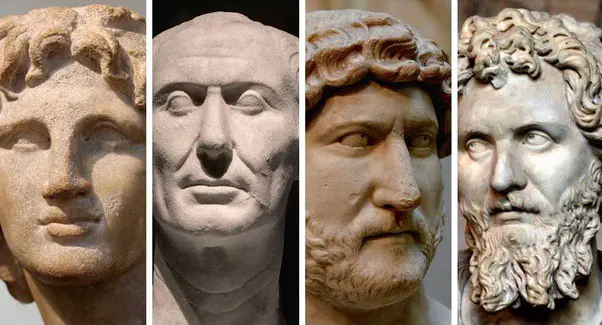
Statues and Busts: Marble Reflections of Grooming Trends
The marble artists of ancient Rome mastered the chisel to such an extent that their statues and busts capture the subtle intricacies of coiled locks and waves, immortalizing the idealized beauty in ancient Rome. The precision with which these sculptors depicted hair illustrates the importance placed on grooming and fashion. These representations transcended mere vanity; they were markers of personal and political identity—and sometimes even divinity.
Toga-Ready: Preparing Hair for Ancient Roman Public Life
In ancient Roman society, presenting oneself in public was a practice steeped in rituals and expectations. Preparing hair for ancient Roman public life was not merely a matter of personal hygiene; it was a meticulous art that aligned with ancient Roman social norms. We understand that one’s appearance could signify their social standing and adherence to societal protocols.
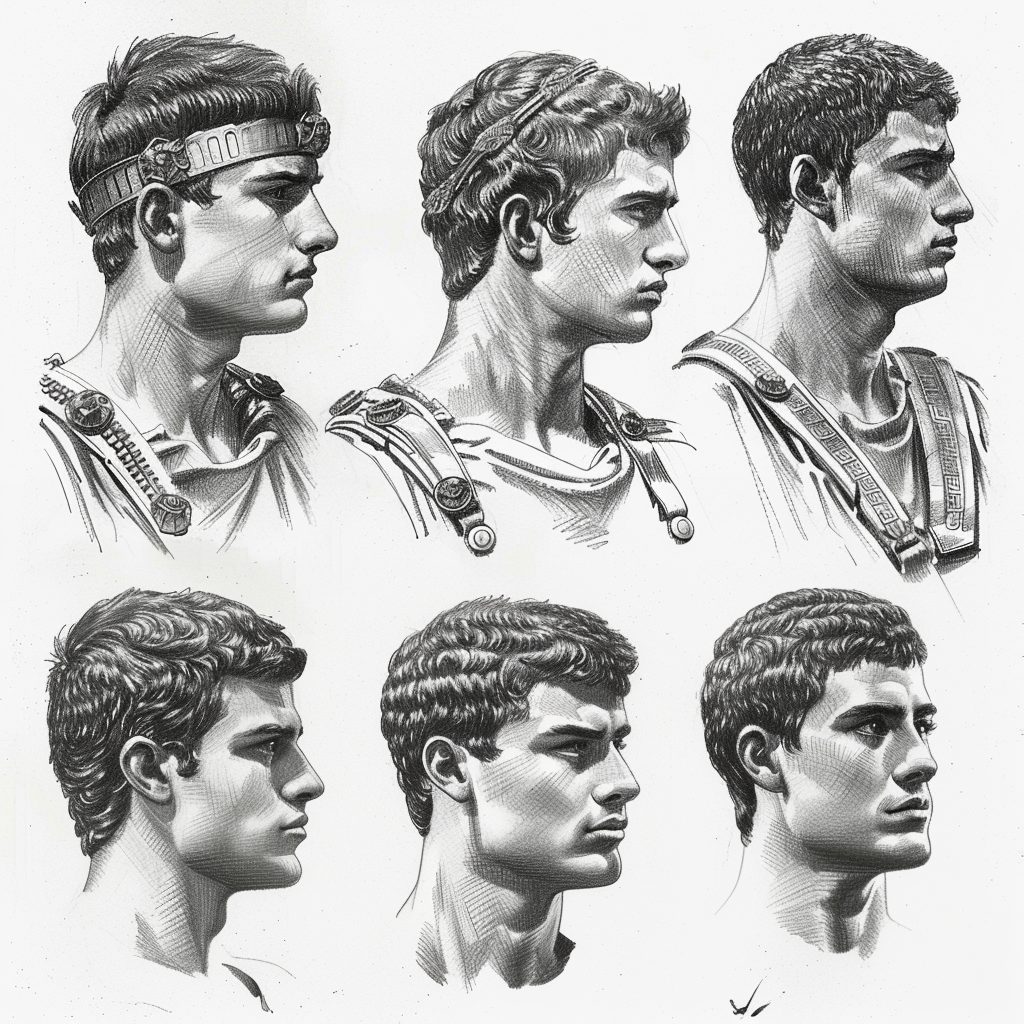
When considering hairstyles for public appearances in ancient Rome, one was mindful of the requirement for balance and neatness. Men in particular would have their hair groomed in ways that exemplified cleanliness and order, embodying the virtues of the civilization itself. However, the meticulousness of grooming for public events went beyond mere aesthetics. It also indicated one’s respect for the customs of the time and the people one would encounter.
- Short and neatly trimmed haircuts were favored by many, reflecting a sense of propriety.
- Slight curling or arranging of the hair in waves, often held in place by natural substances, was quite common amongst those aiming to exhibit a polished persona.
- Adornments were used sparingly and often had symbolic meanings or signified rank.
These grooming rituals were influenced deeply by the ancient Roman social norms. It was expected that a man would show himself in public with a hairstyle that spoke of his identity in society, his role, and his lineage.
Just as the toga was a garment that denoted a free man of Rome, so too was the arrangement of one’s hair a fabric woven from the threads of societal expectation and personal dignity.
The consistency of grooming before public appearances reveals much about the continuity of tradition and the values held by the culture. Thus, the act of preparing one’s hair was not a simple task; it was a ritual that prepared one for the theater of public life in Ancient Rome.
Authentic Roman Grooming Traditions Across the Empire
Authentic Roman grooming traditions have left an indelible mark on history, shaping the self-presentation and aesthetics that were so vital to the Roman identity. As we further explore the intricate tapestry of imperial grooming, it’s crucial to understand the nuanced grooming practices across the Roman Empire that varied from region to region, integrating local customs into a grand Roman fashion.
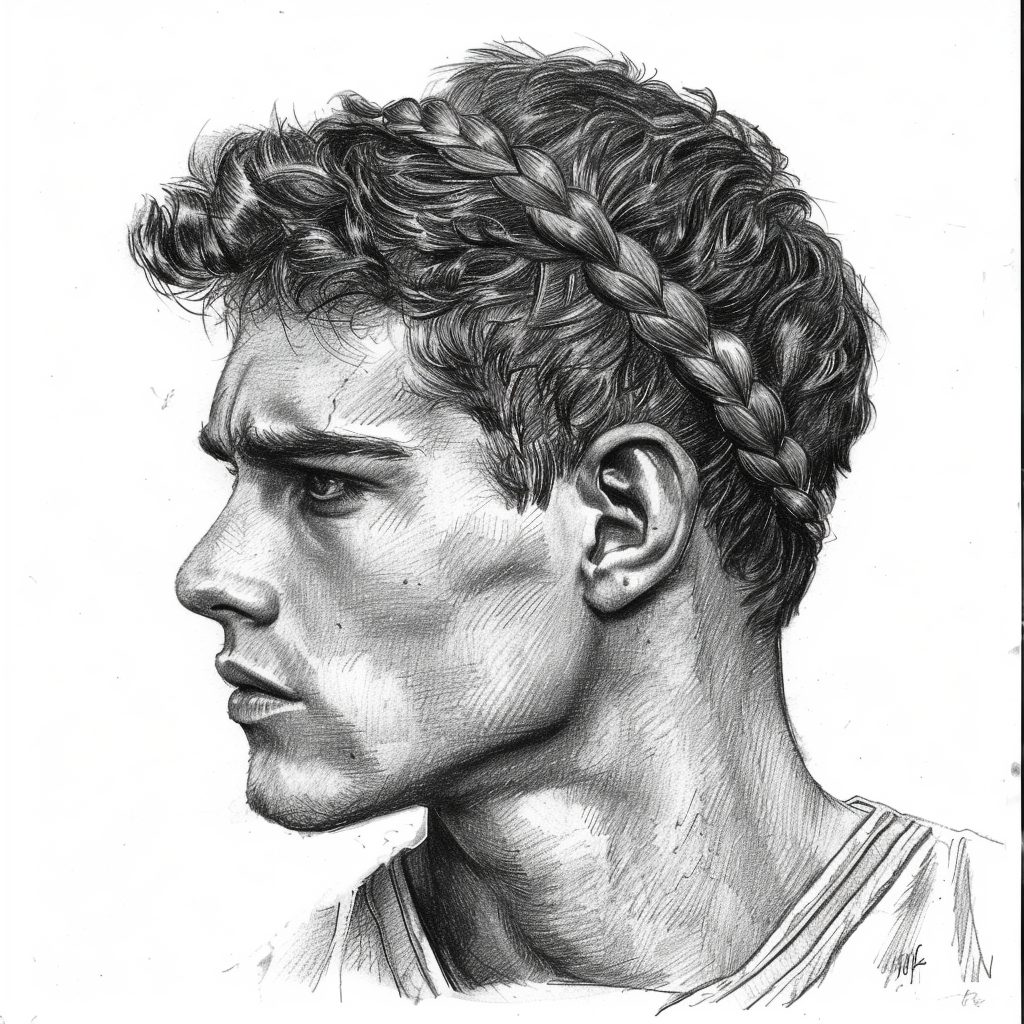
Shaving for the first time remains a pivotal milestone for young men today, a meaningful rite of passage that traces its roots back to Roman tradition. This significant event is historically known as the “Depositio barbae.” For the ancient Romans, the first shaving of the beard marked a solemn ceremony signifying the transition from adolescence into early adulthood. The freshly shaved hair, referred to as “lanugo,” was carefully preserved and offered to the gods as a sacred offering. This practice underscored the importance of this moment in a young man’s life, blending personal growth with spiritual significance.
Beginning in the bustling streets of Rome itself, we observe how standardized grooming reflected unity and order, essential values of Roman society. Moving outward to the farther reaches of the empire, the Mediterranean basin offers a fascinating glimpse of regional variations in Roman hairstyles. In places like Gaul and Hispania, local populations infused their styles with Roman trends, creating a blend that preserved a sense of regional identity while reflecting a cosmopolitan Roman world.x
- Grooming practices across the Roman Empire were not only a form of cultural expression but also a means of social stratification.
- Lush curls and elaborate updos were often imitated in Roman provinces, aspiring to mirror the looks seen in the heart of the empire.
- Areas with warmer climates, such as Egypt and North Africa, adapted Roman styles with more practical, shorter cuts to accommodate the torrid weather.
Intriguing variations are uncovered as we examine the local interpretations of what constituted empire-wide grooming trends. Britons may have sported well-oiled and neatly trimmed hair to signify their status, while in the east, beards and mustaches became integrated into Roman fashion through the influence of Greek and Persian grooming customs. This adaptation showcased a Rome that was not only a ruler but also a learner of local ideologies and styles.
As much as hairstyles and grooming were modes of personal expression, they also served as a unifying aesthetic thread that connected the empire. Hairstyles like the cropped Caesar cut transcended local fashion, becoming an empire-wide grooming trend due to its association with the famed ruler. This example illustrates the broad influence that central figures and fashion in Rome had across its vast territories.
Understanding the diversity and adaptation of grooming practices is key to appreciating the complexity of the Roman identity – an identity that managed to harmoniously blend an astonishing variety of regional styles under a single imperial fashion.
As we continue to explore these ancient grooming practices, we invite you to envision the streets of the Roman Empire, lined with men and women whose hairstyles were much more than mere vanity—they were a statement of culture, identity, and affiliation within an expansive and diverse world.
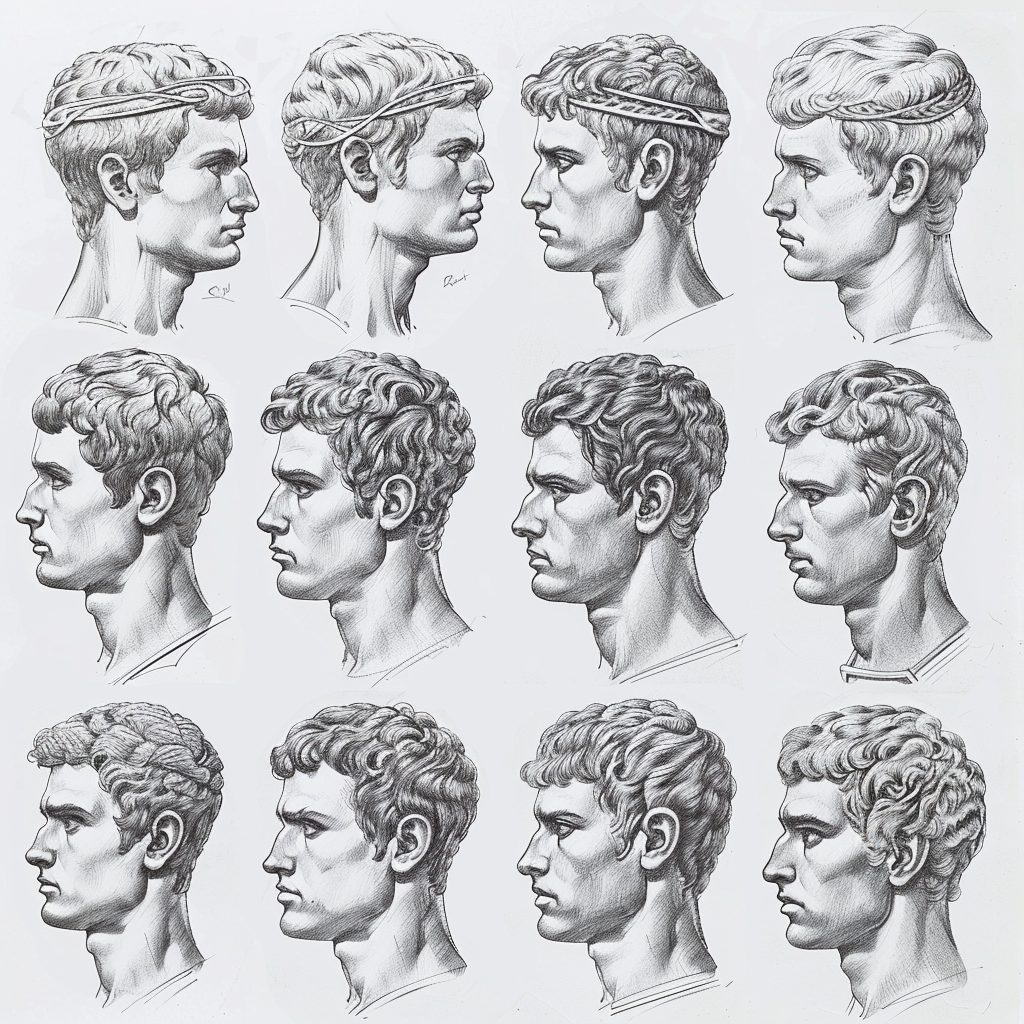
Cultural Exchange: Influences on Ancient Roman Men’s Hairstyles
The canvas of ancient Roman society was vibrant with a cultural exchange that shaped every facet of life, including the often overlooked realm of grooming and hairstyles. As we excavate the layers of history, it becomes evident that Egyptian hair styling intricacies and Greek hairstyle traditions were significant influences on ancient Roman men’s hairstyles, leaving a legacy that is still observable today.
Egyptian Sophistication: Loaned Luxuries in Hair Styling
The grandeur of Egyptian civilization captivated the Romans, who were seduced by the sophisticated techniques observed in Egyptian hair styling. Their admiration went beyond mere appreciation, as they began to weave the luxurious elements they encountered into their own grooming practices. It was a sign of the expansive cultural exchange in ancient Rome, where the power and wealth of Egypt were mirrored in the intricate coiffures sported by Roman men of status.
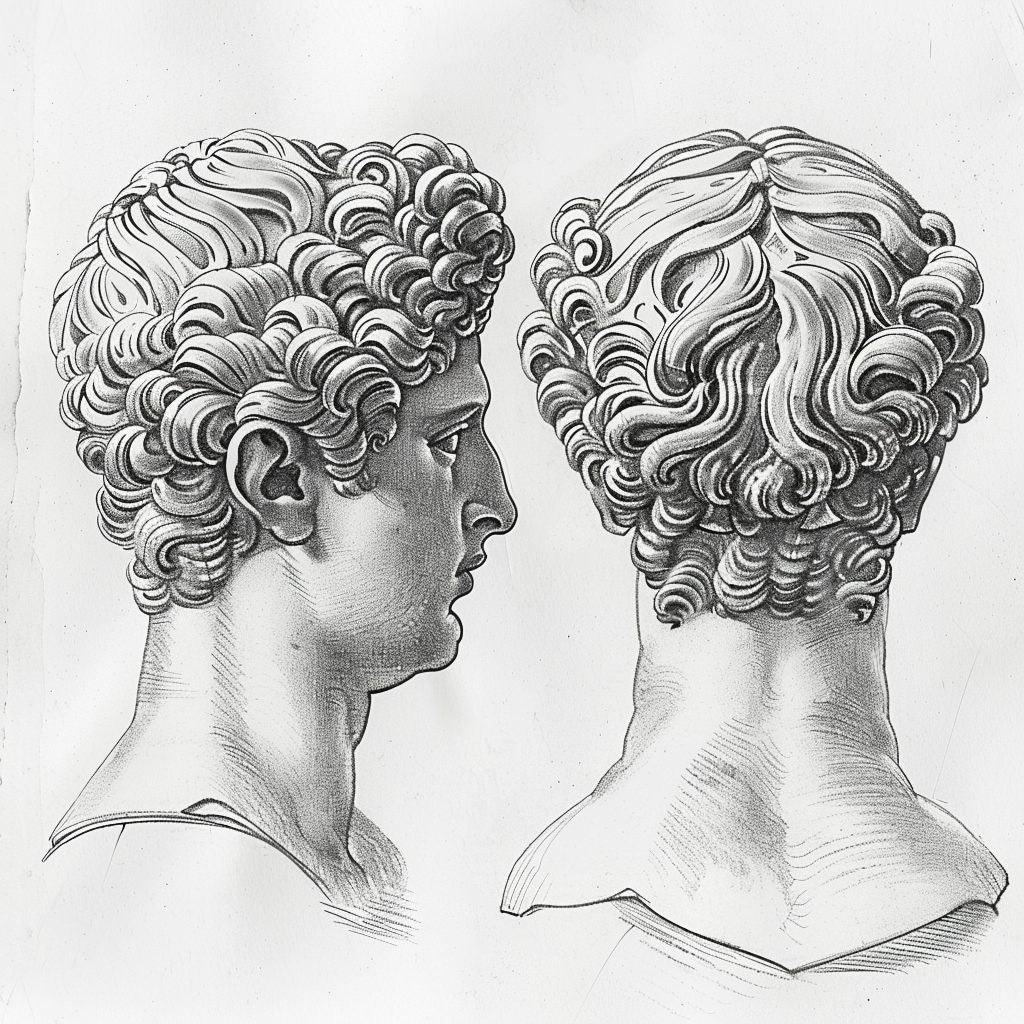
Greek Curls: Merging Traditions in the Mediterranean
Not to be overshadowed by Egyptian flair, the Greek hairstyle traditions offered a softer, more philosophical resonance that appealed to Roman sensibilities. These Grecian styles, characterized by flowing curls and thoughtful arrangement, were adopted and adapted within Rome’s borders. The Greek influences on ancient Roman men’s hairstyles serve as a testament to the cross-cultural interplay that was common in the Mediterranean basin, a meeting point of civilizations.
Celebrity Emperors: How Leaders Dictated Hair Fashion
Throughout history, the personal styles of celebrity emperors in ancient Rome have had a profound impact on grooming trends far beyond the walls of their palaces. The influence of emperors on hair fashion is a tale not just of personal vanity, but also of political messaging and cultural trendsetting. It was the style preferences of these powerful leaders that often dictated the hair fashion of their time and continued to resonate through history to inspire modern looks.
Julius Caesar’s Signature Cut: A Style that Conquered
In Ancient Rome, a lush mane was highly prized among men, symbolizing strength and virility. Julius Caesar, however, grappled with balding—a condition seen at the time as a notable physical flaw. To address his thinning hair, Caesar carefully combed his sparse strands forward over his scalp. Historian Suetonius observed that Caesar was significantly distressed by his baldness. To discreetly cover his receding hairline, he was granted a special privilege by the Senate: the right to wear a laurel crown. This not only allowed him to conceal his baldness but also added a layer of dignity to his appearance.
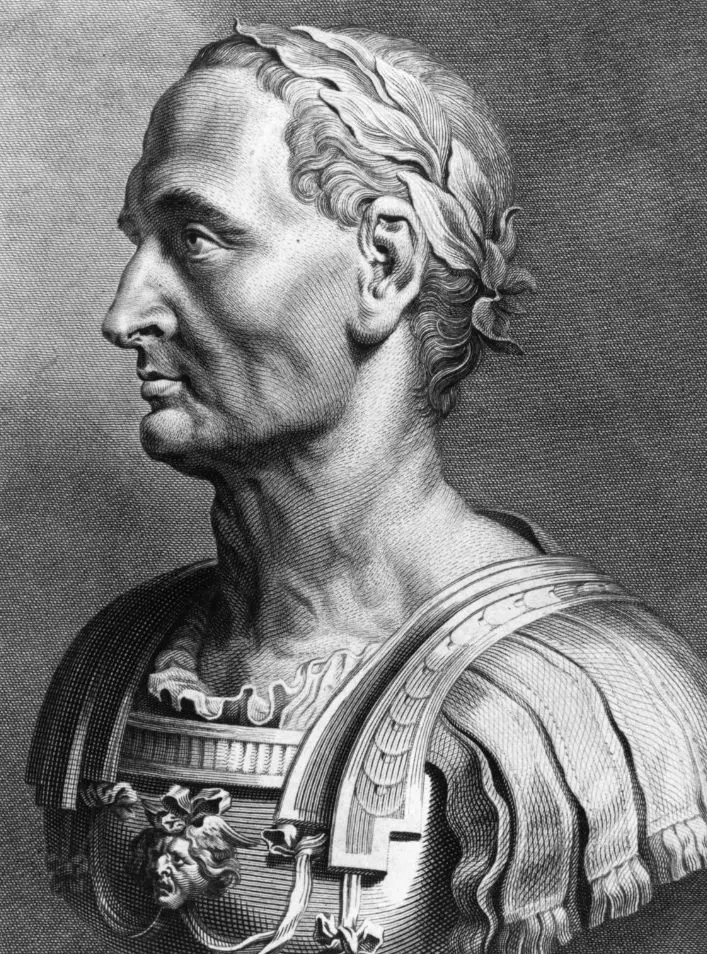
The name Julius Caesar not only conjures images of a formidable ruler but also evokes the iconic haircut that bears his name. Julius Caesar’s haircut, characterized by its short, forward-brushed hair, became much more than a mere personal grooming choice—it was a symbol of power and authority. His forward-thinking approach to hair was emblematic of his progressive leadership, securing Caesar’s place not just in political history but also as a permanent fixture in the realm of fashion.
Hadrian’s Beard: When Facial Hair Made a Comeback
As we turn the pages of history to the reign of Emperor Hadrian, we find a contrasting approach to personal grooming. Hadrian was known for sporting a well-trimmed beard, which was unusual for an era when clean-shaven faces were the norm amongst Rome’s elite. Hadrian’s beard represented a philosophical and cultured image, leading to a resurgence of facial hair among Roman men. This shift underscores the emperors’ impact on grooming trends and the pivotal role these influential figures played in shaping the societal standards of beauty.
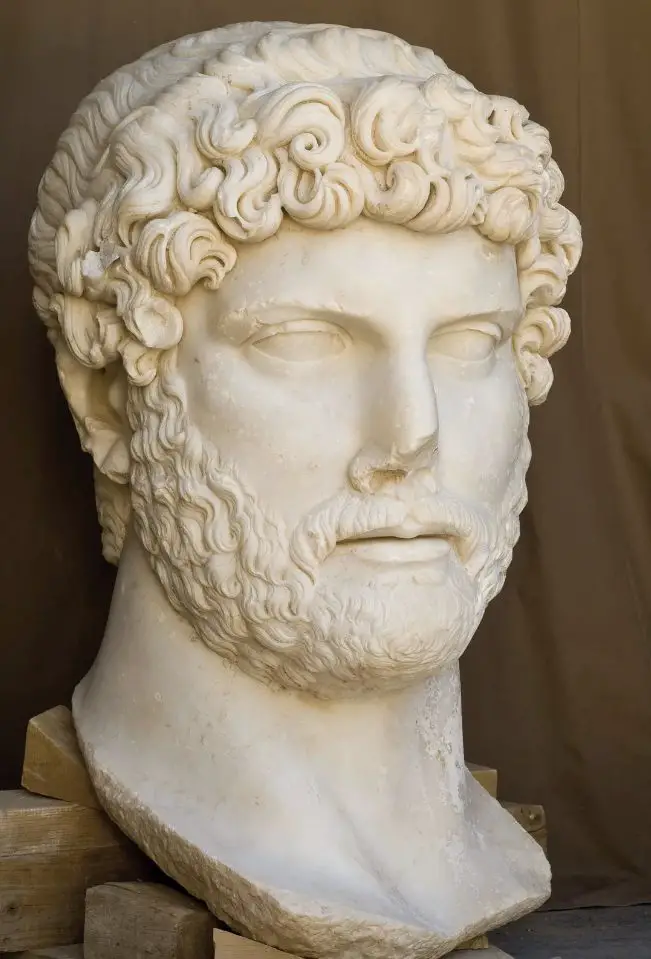
Their personal choices in hairstyle and grooming reverberated through society, solidifying their status as icons of fashion. As we observe modern hairstyles, it’s fascinating to see the threads of these ancient grooming trends continuing to weave their influence into the fabric of contemporary fashion.
The Role of Wealth and Slavery in Ancient Roman Hair Grooming
We must note the indelible role of wealth in Roman hair grooming. It was not just vanity that dictated one’s hairstyle; it was also the breadth of their purse. The ability to maintain elaborate hairstyles was a luxury afforded largely by the affluent. These styles were indicative of a person’s social standing and often acted as a visual marker of the economics of hair fashion.
Patronage and Style: The Economics of Hair Fashion
The influence of patronage on grooming trends was substantial. Patrons, often from the upper echelons of society, endorsed certain hairstyles, making them coveted trends throughout Rome. It was a subtle but persuasive form of economic muscle, where the style on a patron’s head could set the hair fashion for the entire season or even longer.
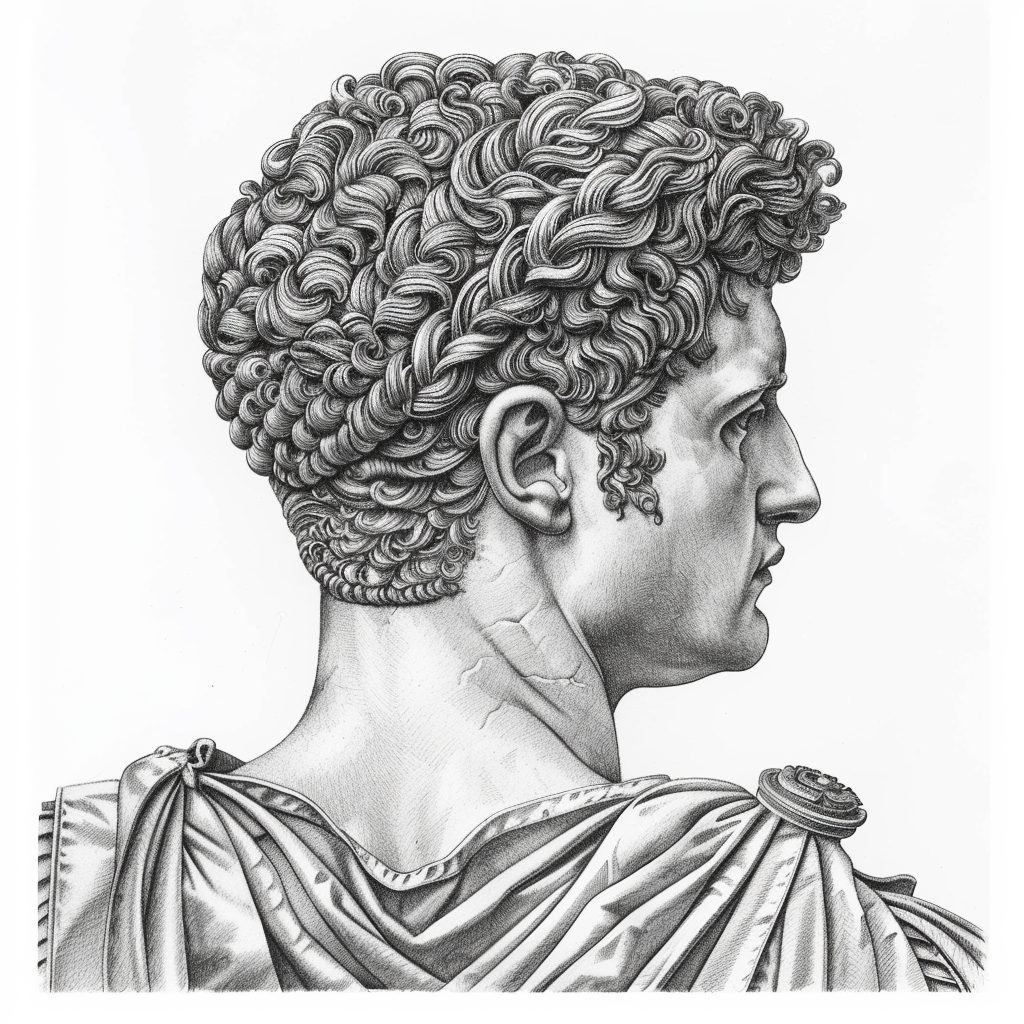
The Slave Stylists: The Hands behind the Hair
Critical yet often overlooked, the slave stylists in ancient Rome were the unheralded architects of coiffure. Their skilled hands were responsible for the iconic looks that we associate with Ancient Roman sophistication. Within the opulent homes of the wealthy, slave stylists spun their artistry, silently shaping the grooming trends that would filter down through society.
A Man’s Mane: Exploring Social Perceptions of Hair in Ancient Rome
The intricate tapestry of customs and societal norms is never complete without looking at the social perceptions of hair in ancient Rome. Hair in this illustrious civilization was far more than a mere personal attribute; it was a canvas showcasing an individual’s identity, status, and lifestyle. Together, let us delve into the practical and philosophical realms where hairstyles held a profound significance.
Warrior Cuts: Preparing for Battle with Practical Styles
When it came to the battlefield, practicality reigned supreme for Roman warriors. The practical hairstyles for warriors were designed to suit the rigor and tumult of combative engagements. These styles were short, manageable, and above all, served a strategic purpose: to prevent any handhold an enemy might exploit during close combat. A warrior’s cut was more than just a fashion statement; it was essential armor in the struggle for survival and victory.
Philosopher Locks: Wearing Wisdom in Waves and Curls
In the intricate tapestry of Roman grooming traditions, the influence of Greek culture was profound, particularly evident in the hairstyles of philosophers. These learned figures in Roman society often sported more elongated waves and curls, styles that were not only reflective of their wisdom but also a nod to their Greek predecessors.
This distinctive style, known as “Philosopher Locks,” was more than a mere fashion statement—it was a symbol of intellectual identity. In Greece, philosophers like Socrates and Plato were often depicted with full, flowing beards and locks, which became emblems of wisdom and contemplation. This trend crossed into Roman culture, where intellectuals also adopted this hairstyle to convey a sense of philosophical gravitas.
The philosopher’s beard, in particular, became a crucial element of this aesthetic. Beards were relatively rare among the Roman elite, who generally preferred to be clean-shaven as a mark of distinction from the Greeks. However, Roman philosophers often grew beards to align themselves with the Hellenistic image of the sage, using their hair to visually communicate their dedication to thought and learning.
Thus, the “Philosopher Locks” and beards served as potent symbols within Roman society, distinguishing the philosophers not only through their discourse but also through their distinct appearance. This style broadcast their intellectual prestige and set them apart in a society where physical appearance could reflect personal philosophy and intellectual pursuits. The visual impact of their curls and beards was a declaration of their life’s dedication to wisdom and scholarly endeavors, making a statement that was both aesthetic and deeply philosophical.
The symbolism of Roman hairstyles permeates deeply into the cultural fabric of ancient Roman society, revealing much about the values and roles that defined Roman citizens. It invites us to understand how each lock and curl carried a narrative of the empire’s diverse characters, from the stoic soldiers on the font lines to the thinkers who contemplated the mysteries of the universe.
Ancient Rome Men’s Hairstyles
From Caesar to Commodus: A Timeline of Roman Hair and Power
Our fascination lies not just in the styles themselves, but how they mirrored the ebb and flow of Roman supremacy. Let’s explore the shifting tides of power and fashion.
- Julius Caesar: His reign brought about the signature cropped haircut, a representation of both strategy and fashion. This no-fuss style suggested an embodiment of utility and leadership, more so in the battlegrounds than in the Senate.
- Augustus: Under his rule, tresses took on a more refined appearance, emulating his disposition towards a unified and prosperous empire. Mane grooming during this time was a testament to Rome’s golden era.
- Nero: Characterized by extravagance in his court, hairstyles followed suit, becoming even more elaborate. Tails and curls signified opulence, echoing the excesses of his governance.
- Hadrian: Famous for popularizing the beard among Roman men, his reign represented a shift not only in grooming but philosophical thought, aligning Rome with the great thinkers of the age.
- Commodus: In this era, the connection between hairstyles and power had evolved dramatically. The lavish and over-the-top looks of Commodus’ time were indicative of Rome’s inner turmoil and the ultimate decline of an empire.
As we connect the dots through our timeline, we see a fascinating pattern of how hairstyles were often a reflection of the ruling philosophies and personal attributes of the leaders of Rome. The hair of the rulers didn’t merely follow their own destiny; it was also a symbol of the prevailing social climate and the collective sentiment of their dominion.
Popular Hairstyles for Ancient Roman Men in Public and Private Life
The aesthetics of ancient Rome were meticulously cultivated, reflecting an individual’s social standing and character. In public, Roman men often sported hairstyles that conveyed their dignity and status. The classic Caesar cut, named after Julius Caesar himself, featured hair trimmed short with a horizontally straight-cut fringe. Such a style was practical, easily maintained, and universally recognized within the fora and baths of Rome.
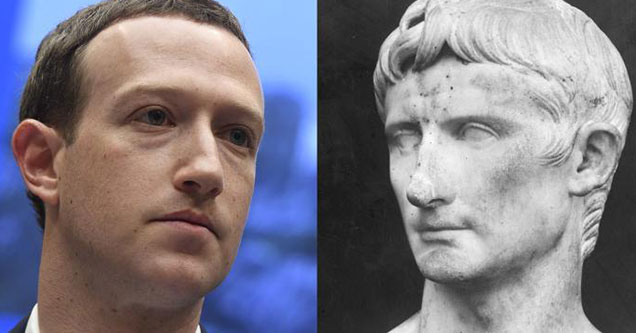
Privately, however, men had the liberty to explore styles that were less constrained by societal expectations. In the comfort of their domus, grooming might lean towards longer, more relaxed cuts that required less frequent maintenance. They often reflected personal preference more than public persona. It wasn’t unusual for a man’s hair to be fashionably oiled and curled, allowing a touch of luxury and indulgence away from the public eye.
- For men, the hair was predominantly styled forward the parted style was reserved for women.
- Wreathed hair, often preserved for special celebrations and ceremonies, signified festivity and could be adorned with laurels or ivy during feasts and triumphs.
- A more elaborate ringlet hairstyle, inspired by the Greeks, was admired among the educated and the elite, often expressing philosophical or artistic affiliations.
Adapting to various roles in society, ancient Roman men chose their hairstyles as an extension of their attire, carefully curated to impress, influence, and express their individuality.
The Integration of Local Styles into Roman Hair Fashion
Throughout the expansive Roman Empire, the integration of local styles into the mainstream culture was not only profound in politics and cuisine but significantly influenced hair fashion as well. Our exploration will reveal the lasting impact of these assimilated elements, deepening our appreciation for the ancient world’s stylistic syncretism.
Conquered Lands: Absorbing the Hair Traditions of Others
In the quest for creating a unified empire, Romans encountered and embraced an array of hair traditions from the myriad cultures they conquered. This absorption of hair traditions signaled a respect for the diversity within the Empire, influencing the Roman aesthetic in meaningful ways. For instance, the Gaulish braids, initially a symbol of tribal identity, gradually found their way into the Roman fashion, adorning the heads of even the most urbane citizens in adapted forms.
The Provinces Speak: Diverse Influences on Roman Style
The diverse influences on Roman style speak volumes about the inclusivity and adaptability of Roman cultural practices. These influences not only enriched the empire’s fashion tapestry but also allowed for regional variations in Roman grooming to flourish. From the tight curls adopted from African provinces to the ornate hairstyles inspired by the Eastern regions, each territory contributed distinctively to the collective identity of Roman hair fashion, creating a mosaic of styles that were distinctly Roman yet vibrantly eclectic.
Classic Roman Hairstyles for Men and Their Modern Equivalents
We find that classic Roman hairstyles continually make their way into the forefront of men’s fashion. With modern equivalents emerging in runways and barbershops alike, the staples of ancient style are undeniably woven into the fabric of contemporary fashion.
The Julius Caesar cut, characterized by its short, horizontally straight-cut fringe, has evolved into the modern “French Crop,” a versatile look that maintains the historic appeal with a trendy edge. Similarly, the flowing locks of the patrician class inspire today’s longer, layered styles that exude a regal flair, reinforcing the notion that ancient hairstyles in contemporary fashion offer a nod to the past while catering to present tastes.
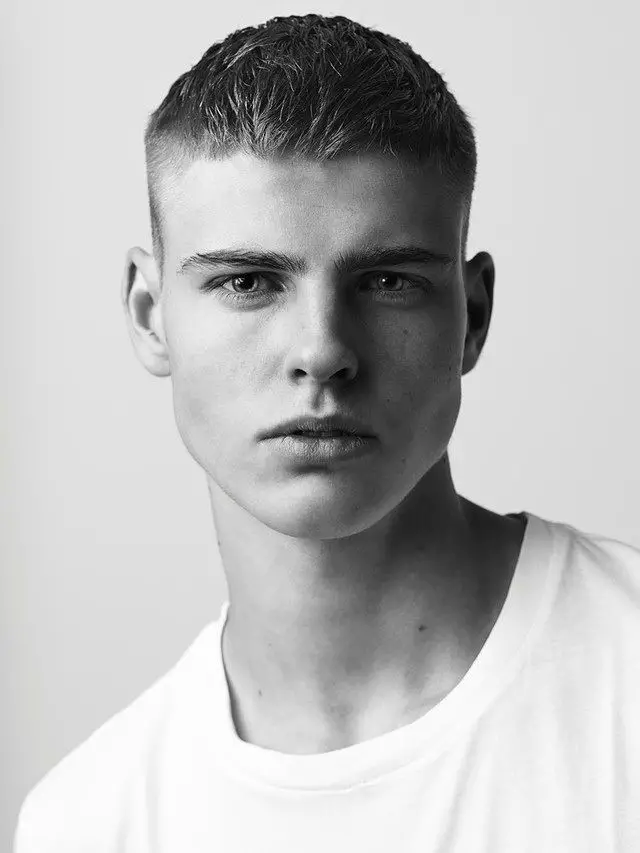
- Julius Caesar Cut → French Crop
- Patrician Flowing Locks → Layered Styles
“The approach to hair that balances the boldness of Rome with the nuances of now creates a grooming experience that transcends time.” – Explore Beauty
As we integrate these timeless grooming trends into our daily lives, they serve as a testament to the enduring legacy of Roman culture. The enduring nature of these styles challenges us to reflect on the impact of historical aesthetics as they continuously shape our perceptions of male grooming.
Thus, as we draw connections from ancient style guides to current fashion statements, we ensure that the fearless spirit of Roman grooming remains alive and vibrant, reshaped for the modern man but rooted in its august heritage.
Impact of Ancient Roman Grooming on Today’s Haircare Practices
The intricate grooming rituals of ancient Rome may appear distant and detached from our fast-paced modern world. Yet, the impact of ancient Roman grooming has unfurled through centuries, subtly infusing itself into the haircare practices of today. As we delve into this rich historical influence, we find a remarkable synergy—a testament to the longevity of tradition and the adaptation of age-old wisdom in modern contexts.
Hair Care Regimens: Ancient Ingredients, Modern Applications
Our journey uncovers how the botanical treasures and meticulous regimens of our Roman ancestors are experiencing a renaissance in today’s haircare milieu. In current formulations, we are witnessing a revival of ancient ingredients in modern haircare. Herbal blends, once applied by Roman hands, are now coveted for their natural efficacy and sustainable allure. For instance, the Romans’ use of rosemary oil for its strengthening properties has been embraced by contemporary brands seeking to fortify and rejuvenate hair with organic solutions.
The Enduring Legacy of Roman Techniques in Contemporary Barbering
The echo of Roman culture resonates, too, in the sanctum of the barbershop, where the Roman techniques in contemporary barbering are palpable in the precise scissor work, the thoroughness of a wet shave, and the artistry of a well-crafted cut. The past whispers to the present, guiding the hands of modern barbers in sustaining a legacy that is not merely about looking back but about carrying forward a tradition of excellence and detail.
A Hairstyle, A Slice of History
Through the annals of Ancient Rome, men’s hairstyles were more than mere fashion. They were distinctive marks of social status, allegiance, philosophy, and even personal hygiene practices that spanned across the mighty Roman Empire. From the simple, unassuming cuts suited to the stoic philosophy of Seneca, to the meticulously arranged locks that crowned the head of a patrician, each style carried a narrative, a slice of history that has transcended time and continues to resonate in today’s grooming culture.
FAQ
What are some popular ancient Roman men’s hairstyles?
Some popular ancient Roman men’s hairstyles include the senatorial hairstyle, which featured a short, combed-back cut, and the Julius Caesar haircut, characterized by short, straight bangs and a rounded top.
What was the historical significance of ancient Roman hair trends?
Ancient Roman hair trends held deeper meanings and served as symbols of status, with certain hairstyles reserved for the elite. They also held religious and political associations, conveying messages about an individual’s standing in society.
How did ancient Roman barbers craft classic hairstyles?
Ancient Roman barbers employed various techniques to create classic hairstyles, including cutting, styling, and grooming men’s hair. They used tools such as combs, razors, and oils to achieve the desired look.
How were ancient Roman hairstyles depicted in art?
Ancient Roman hairstyles were often portrayed in art, including frescoes, mosaics, and statues. These artistic representations provide glimpses into past aesthetics and showcase the grooming trends of the time.
What hairstyles were suitable for public appearances in ancient Rome?
Ancient Roman society had specific grooming rituals and hairstyles appropriate for public events. These hairstyles varied depending on the occasion, and adhering to social norms was important when preparing hair for public life.
How did ancient Roman grooming traditions vary across the empire?
Ancient Roman grooming traditions varied across the different provinces of the Roman Empire. While there were overarching Roman aesthetic standards, each region embraced its own unique grooming practices, resulting in some regional variations.
What influences shaped ancient Roman men’s hairstyles?
Ancient Roman men’s hairstyles were influenced by external cultures. Egyptian hair styling techniques, for example, found their way into Roman culture, as did Greek hairstyle traditions, showcasing the cultural exchange that took place in the Mediterranean region.
How did celebrity emperors influence hair fashion in ancient Rome?
Celebrity emperors, such as Julius Caesar and Hadrian, had a significant impact on hair fashion in ancient Rome. Julius Caesar’s signature cut became a popular style, while Hadrian’s beard made a comeback during his reign.
How did wealth and slavery influence ancient Roman hair grooming?
Wealthy individuals often set grooming trends in ancient Rome, with patronage playing a role in shaping hair fashion. Additionally, slave stylists made significant contributions to ancient Roman grooming, showcasing their skill and craftsmanship.
What were the social perceptions of hair in ancient Rome?
Hair held social importance in ancient Rome, with different hairstyles conveying specific symbolism. Practical hairstyles for warriors showcased their preparedness for battle, while distinctive hairstyles were associated with Roman philosophers, reflecting wisdom and intellect.
What are some classic Roman hairstyles that still hold relevance today?
Classic Roman hairstyles, such as the senatorial hairstyle and the Julius Caesar haircut, still hold relevance in contemporary fashion. These timeless grooming trends continue to inspire men’s hairstyles today.
What is the impact of ancient Roman grooming on today’s haircare practices?
Ancient Roman grooming practices still have an impact on modern haircare. Traditional Roman haircare regimens, including the use of specific ingredients and techniques, remain relevant today. Additionally, Roman barbering techniques continue to shape the craft of hairdressing.
Source Links
- https://en.wikipedia.org/wiki/Roman_hairstyles
- https://www.esteticamagazine.com/2014/03/16/coiffure-legendaire-the-amazing-history-of-the-roman-barbers/
- http://www.tribunesandtriumphs.org/roman-clothing/roman-hairstyles.htm
- https://giovannismediabarbershop.com/the-evolution-of-mens-hairstyles-a-journey-through-time/